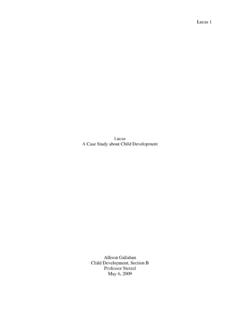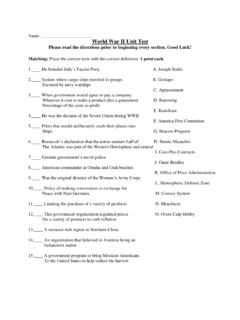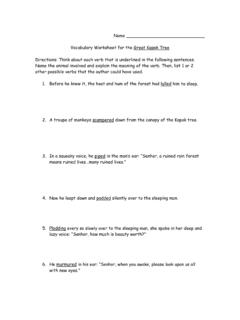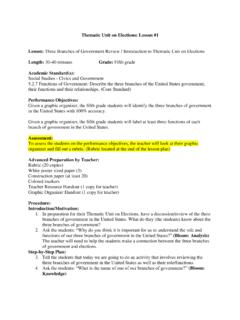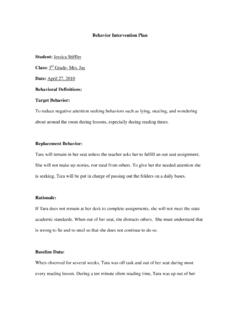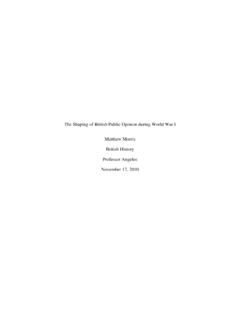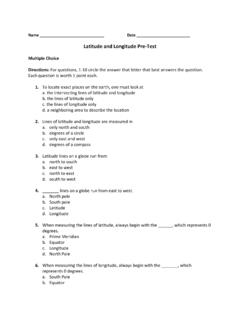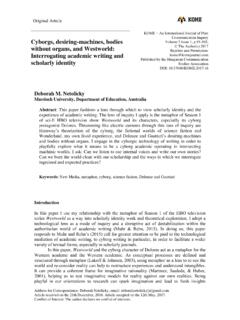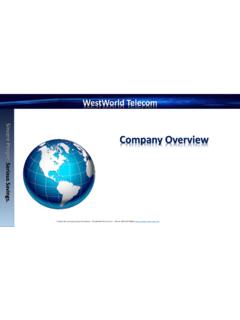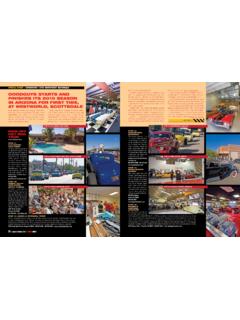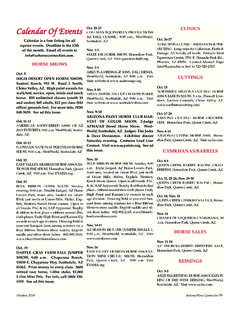Transcription of Westworld Is Strikingly Real: AI Could Be Conscious and ...
1 FACTS SO ROMANTIC Westworld Is Strikingly real : AI CouldBe Conscious and UnpredictablePOSTED BY CODY DELISTRATY ON DEC 11, 2016 ADD A COMMENT FACEBOOK TWITTER EMAIL SHARINGON IDEAS cftmUPhotograph by HBO / YouTubeestworld recently wrapped its first season with a few stunning twists and a stunning statistic: With a 12-million-vieweraverage, it was the most-watched first season of an original HBO show in the network s history. Westworld concerns aperverse theme park, styled in the fashion of the American Old West. The park s hosts, artificially intelligent beingsphysically indistinguishable from humans, begin to remember the horrifying experiences inflicted on them by the park s guests, thehumans who pay to visit and do as they please, including raping and killing Ford (Anthony Hopkins), the fictional cofounder of Westworld , built the park s hosts with the ability to improvise and makeWWdecisions based on their environment a vision of AI Strikingly similar to the one held by Simon Stringer, the director of the OxfordCentre for Theoretical Neuroscience and Artificial Intelligence.
2 Stringer is one of the field s leading thinkers, and like Ford, he saysmachines with some internalized spatial and causal model of the world Could achieve an intuitive, human-like my conversation with Stringer about Westworld , we discussed what makes AI seem human, the potential threat AI poses tohumans, the role of self-modifying programming, and the importance of the Turing might we have a Westworld Westworld of our own?Well, I can tell you, no one is going to produce anything of that level within the next century. That s very long-term research. Anyonefrom my lab will know how long this kind of research takes. You can spend a lifetime working on one small area of the brain, trying tomake sense of AI ever achieve consciousness?
3 With adequate funding, I think within the next 20 years we ll see a move toward consciousness. We can get to basic cognitivesystems that might be somewhere between a mouse and a rat, and that would be extraordinary to achieve because you would vebuilt the first basic artificially Conscious s been shown back in the 1930s and 40s that even the brains of rats can learn a causal model of the world, and then they canexploit this world knowledge to guide their behavior. If a rat learns about the paths in its maze and then you block a path, it can takethe next alternative route to get to a food reward. That sort of behavior flexibility, which is why our human brains learn about howthe world works, means we can juggle this information to correct normal behavioral sequences.
4 In other words, a core part of ourown intelligence is that we learn a causal model of the world, and we exploit this world knowledge to guide our behaviors. So it sboth memory and flexibility that will play a key role in future machines that can display genuine artificial intelligence and it be realistic to give AI biological components? This is the expectation of the Westworld Westworld writers, who have theinactive hosts being stored in refrigerated think that s going to come, but in a different way. At Oxford, people are developing artificial retinas. People are already developingneural implants to cope with, for example, sensory processing, and I think we ll see other sorts of implants that go directly into thebrain that might help with memory and motor functions and so on.
5 I think we re going to see the development of cyborgs, but we regoing to see humans morphing into cyborgs, rather than AIs morphing into cyborgs. It s happening now. There are people walkingaround Oxford who were blind and now they literally have bionic eyes. I was growing up in 1970s when we had The Six Million DollarMan and Steve Austin and it was all science fiction. Now they re actually creating bionic eyes, and they work. It s it be possible to set strict limitations on AI while allowing them to access memories and self-modify theirprogramming?It s difficult to say what sort of control we might have. The one other thing about human beings and consciousness is that it gives usthis great autonomy. That s what we re aiming for in machine consciousness.
6 We want systems that really understand the ve got people like Stephen Hawking today expressing concerns about an existential threat to humanity by artificial intelligence. Ican tell you: None of the systems today pose any such threat because they don t begin to understand their world. They will onlyrepresent a threat to us if they begin to understand the world and in the common sense way like the human may be familiar with the work coming out of DeepMind. They rose to prominence when they developed some software thatlearned how to play Atari computer games. I was listening to someone being interviewed on the BBC World Service, an eminentprofessor of machine learning; I won t say which university he was from.
7 He was saying that they were using what s called model-free reinforcement learning. Through this kind of technique, the program doesn t actually learn about how the world works. Itsimply learns that if I see this sort of arrangement of pixels on the screen, I just do this. Its mapping is optimized by reward s an algorithmic approach that doesn t machines ever be able to understand the world?It s only the kinds of systems that display consciousness itself that would ever begin to understand the world. These machines reallywill display behavioral autonomy, and they will be unpredictable . They will be the Westworld Westworld hosts looklike humans, but will AI beings in the real world necessarily looklike people?
8 Not at all. They Could even have entirely virtual lives inside a virtual world. I think they have to exist in some sort of physical space, asimulacrum in a physical space, and they ll need some sort of morphology, so they ll need some sort of body with senses and drive inorder for the system to self-organize, like a brain. But I think we ll be entirely free to design our own morphology and drives and thesystem will WestworldWestworld, the park s success is predicated on the fact that the hosts are indistinguishable from guests what is itthat makes artificial beings seemhuman?I think we look first at their behavior. Neurological models give us deep insight into the very nature of consciousness itself. Whenyou look at the world, you see millions of features at every spatial scale.
9 If I look at a lamp stand opposite me, I see all the boundaryelements the curvature and how all the elements link together at every spatial scale. These visual pictures are thought to berepresented at successive stages of the visual system. In other words, the simplest features are extracted at the early layers of thevisual cortex. More complex features like whole objects and faces are extracted at later stages of processing. We now can see how allthese features are related to each other; that s the binding problem that we have now solved. It s incredibly rich. We really just findourselves now standing at the foot of a mountain of whenever you develop models of brain function, there are two halves of the coin.
10 There s the actual neural-level architectureand then there s the sensory world. When you combine these two things, the emerging complexity is almost overwhelming. That swhat we will be exploring in the years ahead. That s why it s so hard to say what is human, what is non-physical AI the likely next step for the discipline? Like Microsoft s Xiaoice and other AI virtual chat bots?You know what? That is such a good question. Let me give you an interesting answer to it. I think the Turing Test is a disaster forNew Chapters Editor's Picks artificial intelligence. A lot of people who design chat bots are thinking about the Turing Test. Can we get this chat bot to replicatehuman speech so well that it would fool people?

